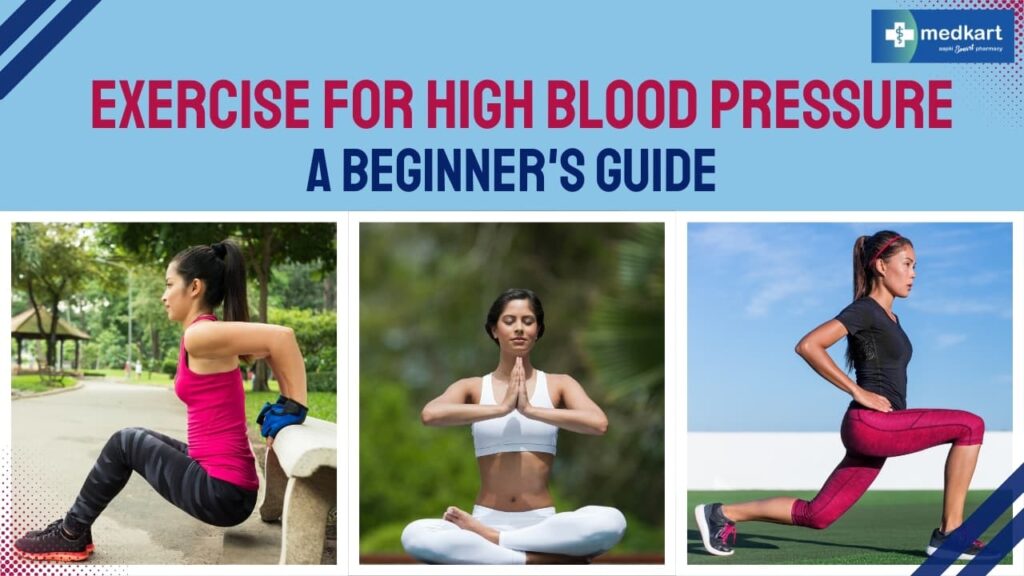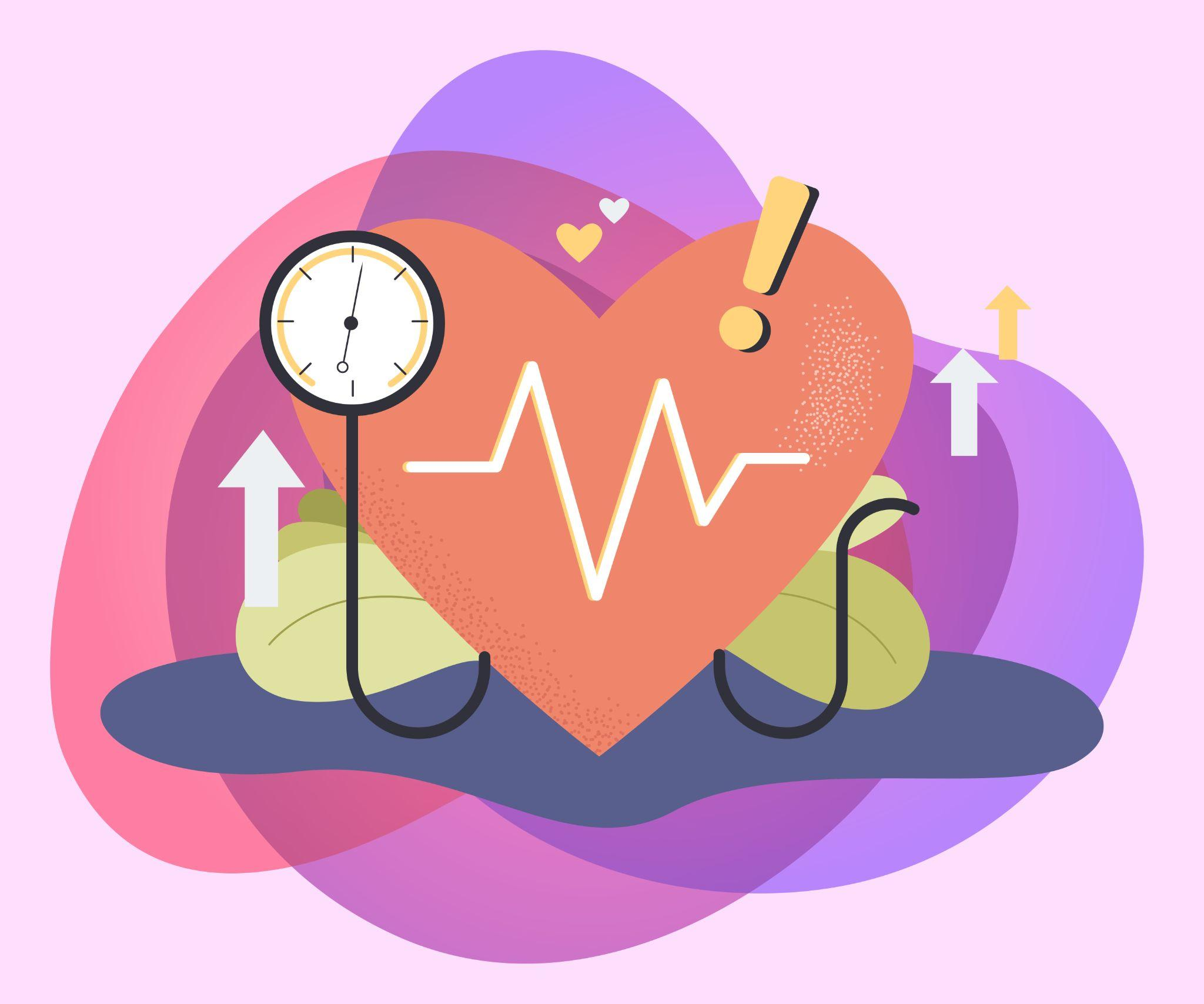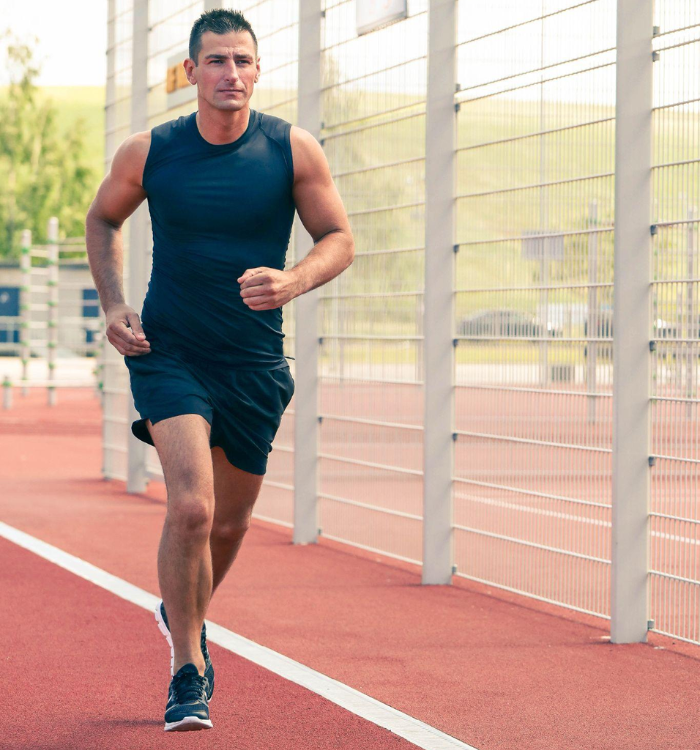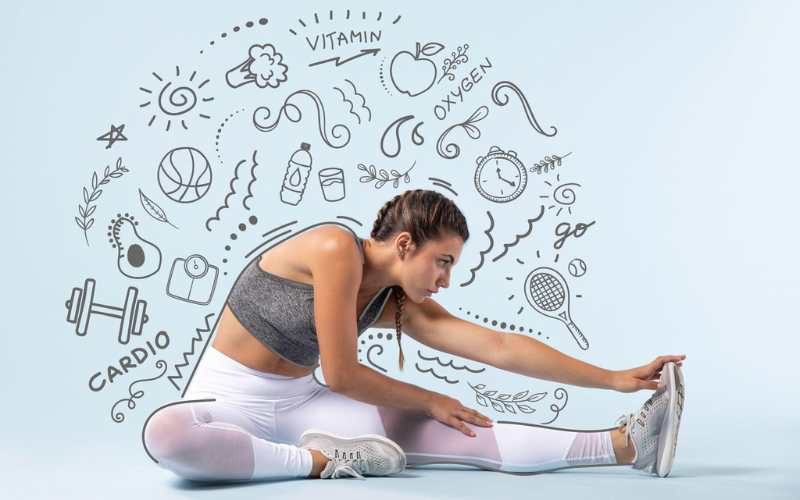Last updated on April 17th, 2025 at 02:51 pm

High blood pressure (hypertension) is a common health condition that affects millions of people globally. Left unchecked, it can lead to serious complications, including heart disease, stroke, and kidney failure. While medications can be essential for managing hypertension, lifestyle changes—especially exercise—play a crucial role in lowering blood pressure naturally.
Exercise is a very helpful when trying to manage high blood pressure. Regular physical activity helps strengthen the heart, improve blood circulation, and reduce the force on your arteries, naturally lowering blood pressure levels. Those with hypertension, incorporating exercise into daily life routine can lead to significant health improvements by reducing the risk of heart disease, stroke, and other complications. Whether you’re a beginner or returning to fitness, the right exercises—such as walking, swimming, or yoga—can safely and effectively support your journey to better heart health.
Why Exercise is Important for High Blood Pressure
- Improves Heart Health: Exercise strengthens your heart, making it more efficient at pumping blood. When your heart is stronger, it requires less effort to circulate blood, which helps in reducing the force on your arteries, lowering your blood pressure.
2. Reduces Stress Hormones: Physical activity decreases stress hormones such as adrenaline and cortisol which cause your blood pressure to spike when they’re elevated, so keeping them in check through exercise helps stabilize your overall levels.

3. Aids in Weight Management: Excess weight can put strain on your cardiovascular system, increasing the chances of hypertension. Regular exercise helps with weight loss and maintaining a healthy weight, which impacts blood pressure control.
4. Promotes Blood Vessel Health: Regular physical activity improves blood vessel flexibility, making it easier for your arteries to expand and contract as needed. This leads to better blood circulation and lower blood pressure levels.
5. Improves Sleep: Poor sleep quality and insomnia can increase your risk of hypertension. Exercise helps regulate your sleep patterns, which in turn, supports heart health and blood pressure management.
How Much Exercise Do You Need?
It is recommended at least 150 minutes of moderate-intensity aerobic exercise or 75 minutes of vigorous exercise per week for adults. However, if you’re new to exercise, it’s important to start slow and gradually increase your activity level over time.
For individuals with high blood pressure, consistency is key. Small, regular bouts of exercise can be more beneficial than sporadic, intense sessions. Aim for 30 minutes of moderate exercise most days of the week. If 30 minutes seems overwhelming at first, break it into three 10-minute sessions.
Best Exercise for High Blood Pressure
Here are the top best exercises for high blood pressure :
1. Aerobic Exercise (Cardio)
Aerobic exercises are the best type of physical activity for lowering blood pressure. These exercises get your heart pumping, improve oxygen circulation, and enhance the efficiency of your cardiovascular system.

Examples of Aerobic Exercise:
- Walking : One of the easiest and most effective exercises for people with high blood pressure. A brisk 30-minute walk five times a week can significantly lower systolic pressure.
- Jogging or Running : For those already in moderate fitness condition, jogging or running can enhance cardiovascular endurance and improve heart health.
- Cycling : Whether on a stationary bike or riding outdoors, cycling is a low-impact exercise that strengthens the heart and reduces blood pressure.
- Swimming : Swimming is a full-body workout that is gentle on the joints. It’s especially beneficial for people with arthritis or joint pain along with hypertension.
- Dancing: Activities like Zumba, ballroom dancing, or even dancing around your living room can provide a fun way to keep your blood pressure under control.
How It Works: Aerobic exercise improves the heart’s efficiency and lowers the resistance in blood vessels, helping to decrease blood pressure.
2. Strength Training (Resistance Exercise)
While aerobic exercises and strength training have the most significant impact on blood pressure. Building muscle mass helps boost metabolism and improves insulin sensitivity, which indirectly helps manage hypertension. Resistance exercise can be done with free weights, resistance bands, or bodyweight exercises like squats and push-ups.
Examples of Strength Training Exercises:
- Bodyweight Exercises: Squats, lunges, and push-ups are great for building muscle without needing equipment.
- Free Weights: Dumbbell and barbell exercises like chest presses, rows, and bicep curls.
- Resistance Bands: These versatile tools are great for low-impact strength training.
- Machines: Gym machines can help you target specific muscles.
How It Works: When combined with aerobic exercise, strength training helps lower both systolic and diastolic blood pressure, while also improving overall muscle and cardiovascular health.
3. Yoga and Stretching
Yoga offers more than just relaxation; it’s also a powerful tool for controlling blood pressure. Yoga combines physical postures, breathing exercises, and meditation, all of which have a calming effect our nervous system. This reduces stress, a common contributor to high blood pressure.

Examples of Yoga for High Blood Pressure:
– Child’s Pose (Balasana): This is a gentle resting posture that calms our nervous system.
– Seated Forward Bend (Paschimottanasana): This asana helps in relieving stress and stretches our back and legs.
– Legs Up the Wall (Viparita Karani): This asana promotes circulation and reduces our blood pressure.
– Corpse Pose (Savasana): This asana is often practiced at the end of a yoga session as it promotes deep relaxation and lowers our heart rate.
How It Works: Yoga reduces stress hormones, improves breathing patterns, and promotes mindfulness, all these contribute in lowering our blood pressure.
4. Pilates
Pilates, like yoga, focuses on core strength, flexibility, and controlled breathing. It’s a low-impact exercise that helps with muscle toning, posture improvement, and relaxation, making it beneficial for people with high blood pressure.
How It Works: Pilates focuses on breathing and core strength which helps in improving our blood circulation, reduces tension, and lowers stress which contributes to healthier blood pressure.
5. Interval Training
High-Intensity Interval Training (HIIT) involves alternating between short bursts of intense activity and periods of rest or lower-intensity movement. HIIT has been proven to be very effective in reducing blood pressure in people with higher systolic numbers.
Examples of Interval Training:
– Sprint-Walk Intervals: Alternate between 1-minute sprints and then 2 minutes of walking for 20-30 minutes.
– Cycling Intervals: Alternate between fast-paced cycling with slower recovery periods.
– Rowing Intervals: Row intensely for 30 seconds, followed by doing it slowly for 1 minute.
How It Works: Interval training challenges your cardiovascular system, making your heart stronger and more efficient. The periods of high intensity help improve heart function and blood pressure more effectively than steady-state cardio for some individuals.
6. Tai Chi
Tai Chi is a form of martial arts known for its slow, graceful movements and deep breathing. It combines physical activity with mindfulness, reducing stress and improving cardiovascular health. Studies have shown that Tai Chi can help lower blood pressure in older adults.
How It Works: The slow, deliberate movements and controlled breathing in Tai Chi calm the nervous system and improve circulation, leading to a decrease in blood pressure.
Causes of sudden high blood pressure
Sudden high blood pressure, also known as a hypertensive crisis, can result from factors like intense stress, excessive salt intake, or chronic kidney disease. Lifestyle habits, such as alcohol bingeing, drug use (e.g., stimulants like cocaine), or skipping blood pressure medications, can also cause rapid spikes. Certain medications, pain relievers, or interactions between them may lead to sudden blood pressure elevations as well.
Conclusion
Exercise is one of the most effective natural ways to manage high blood pressure. For beginners, the key is to start slow, be consistent, and listen to your body. A combination of aerobic exercises like walking or cycling, strength training, and relaxation techniques like yoga can help you build a balanced fitness routine that supports your heart health.
Remember, while exercise can significantly lower your blood pressure, it’s not a replacement for prescribed medications or professional medical advice. Work with your healthcare provider to create a comprehensive plan that includes exercise, diet, and stress management for long-term success in managing high blood pressure.
By staying active and making gradual, healthy lifestyle changes, you can effectively lower your blood pressure and improve your overall well-being.
FAQs On Exercise for High Blood Pressure
1. How to control high BP?
To manage high blood pressure you must focus on a balanced, low-salt diet, stay active with regular exercise for about 150 minutes of moderate activity per week, along with that also manage stress through relaxation techniques like deep breathing or yoga. You should avoid smoking, cut back on alcohol, and stick to your doctor’s medication plan if prescribed.
2. How to lower blood pressure?
To lower your blood pressure, regular aerobic exercise like walking or cycling for at least 150 minutes a week is advised. You should also follow a heart-healthy diet that’s low in salt and processed foods, and rich in fruits and vegetables. Reducing stress and limiting alcohol along with taking any prescribed medications play a big role in lowering your blood pressure.
3. Does walking help lower blood pressure?
Yes, walking is a great way to lower your blood pressure as it boosts circulation and strengthening your heart. You should aim for at least 30 minutes of brisk walking most days of the week to see the best results.
4. Does exercise lower blood pressure?
Absolutely! Regular exercise lowers blood pressure by making your heart stronger and improving blood flow. Aerobic exercises like walking, cycling, or swimming can particularly be highly effective for keeping blood pressure in check for a long-term.
5. what is normal BP range for women?
The normal blood pressure range for women is typically around 120/80 mm Hg. Values slightly below or above may still be considered normal, but consistent readings above 120/80 may require monitoring.
Related Links :
